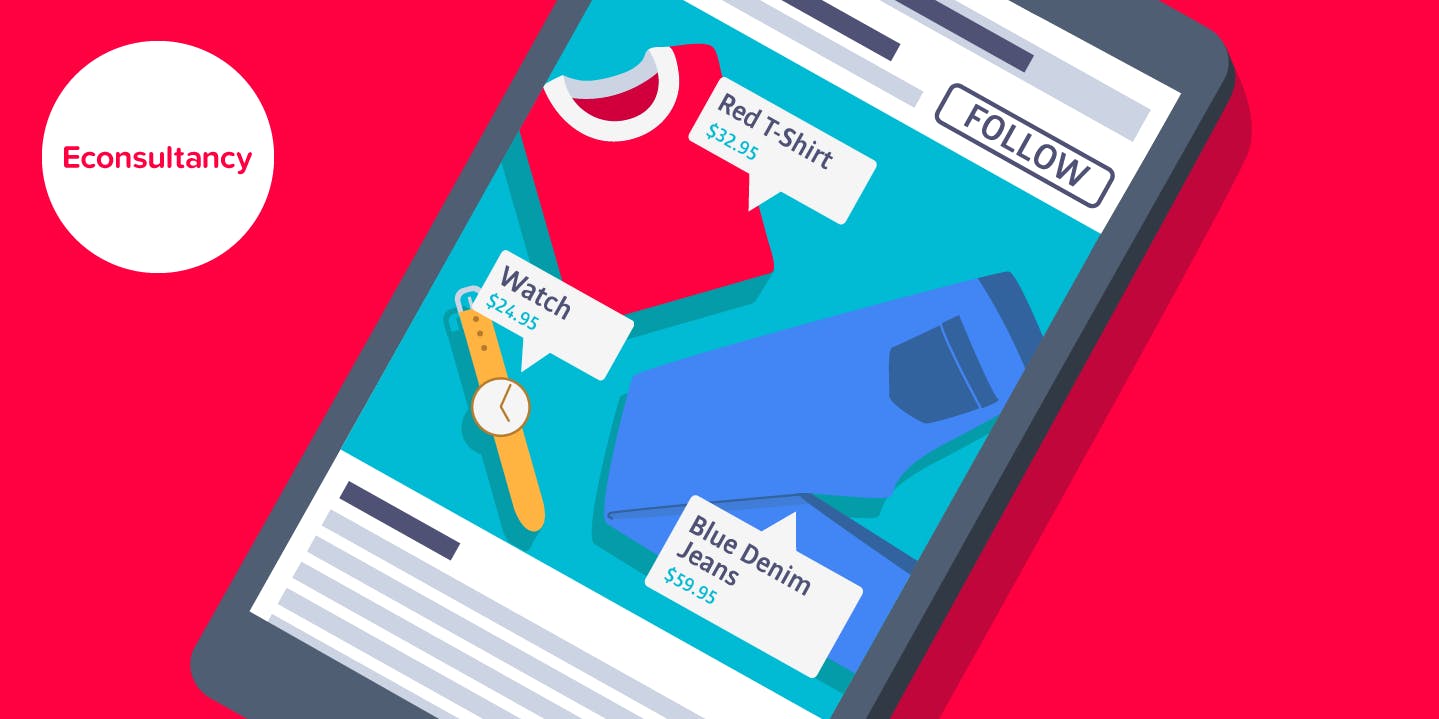The goal: make it possible for users to more easily obtain information about and purchase products they discover on Instagram.
Formats like shoppable posts are obviously attractive for retailers trying to turn their activity on platforms like Instagram into sales, but wise retailers will give thought to the new kind of customer journey these formats create.
(A quick note that Econsultancy has just refreshed its Paid Social Media Advertising Best Practice Guide and subscribers can download it now)
Product landing pages versus product pages
For retailers hoping to convert referrals from shoppable formats into sales, it might be worth considering the creating of product landing pages.
What is a product landing page? Put simply, it’s a product page that, like a good landing page, is created with the goal of encouraging a user to take a very specific action. In this case, that action is a purchase.
To that end, unlike a product page, which uses a standard format and functions within the context of a retailer’s broader site, a product landing page can:
- Employ a unique design that is intended to wow the shopper and highlight the unique attributes of a single product.
- Contain content, such as video, above and beyond what is typically contained on a product page.
- Offer shoppers the ability to complete the purchase directly on the page through an embedded checkout form.
The rationale for a product landing page versus a product page is that shoppers who are referred through a shoppable format have through their actions expressed a high enough level of interest in a single product to interrupt their social activity to learn more. Therefore it behooves a retailer to do whatever it can, within reason, to convert those shoppers’ immediate interest into an impulse purchase.
Obviously, for retailers that sell a large number of products, it will not be feasible to create a product landing page for every product. Retailers employing this strategy would need to be strategic about which products make sense to promote via product landing pages tied to shoppable posts.

Won’t product landing pages decrease average order values?
In every retailer’s ideal world, shoppers referred through shoppable formats would not only have an interest in the product that caught their eye, but after adding said product to cart would also window shop and purchase other products.
The product landing page concept is based on the notion that retailers don’t live in an ideal world and that, at least in some cases, it would be better to optimize conversions for a single product even if the experience provides less opportunity for shoppers to explore other products.
This, however, doesn’t mean that retailers adopting this approach wouldn’t be able to promote other products. Product landing pages could feature a number of related products and even make it possible for them to be added to an order with a single click (eg. through a checkbox).
For retailers to be successful with this, they would need to have identified ideal cross-sells for each product. While many retailers have product pages containing algorithmically-generated related products, some are more accurate and refined than others. For product landing pages, a hands-on curation model might be more appropriate.
The importance of post-purchase experience
In today’s highly competitive retail environment, post-purchase experience is increasingly important in establishing some level of loyalty and driving repeat purchases. Post-purchase experience would arguably be even more important with the product landing page approach because the pre-purchase experience would again be optimized for the conversion of a single product.
To encourage repeat business from new customers who complete a purchase through a product landing page, retailers would want to be strategic about post-purchase communications. These communications should highlight the retailer’s brand and other offerings. Where appropriate, retailers could also use coupon codes and discounts to encourage customers to check out what else they have.
The evolution of shoppable experiences
The way shoppers discover new products and make purchasing decisions is changing. Given the prominence of visual social platforms like Instagram, Snapchat and Pinterest, particularly in certain product categories, retailers will need to start thinking about how they take full advantage of shoppable experiences and experimenting with creating new types of customer journeys that are optimized for these experiences.

Comments